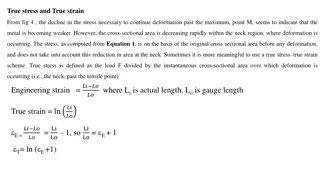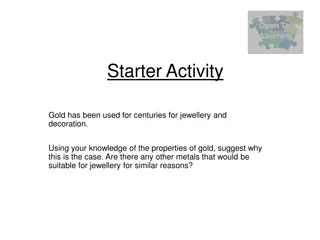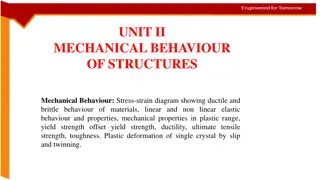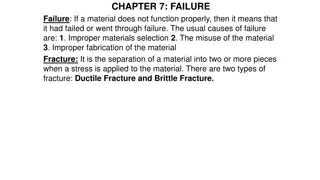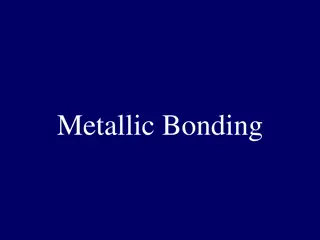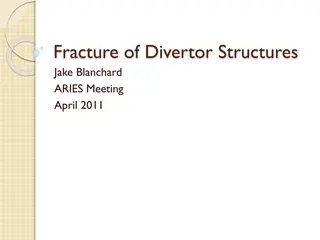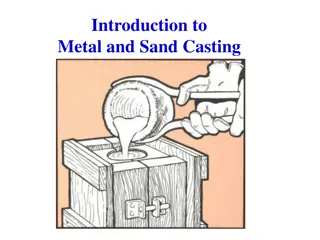Understanding Stresses and Analysis in Engineering
Stress is the internal resistance in a body when deformed, measured in Pascal (Pa) or Mega Pascal (MPa). Types of stress include shear, torsional, tensile, compressive, and bending stress. The relationship between stress and strain is crucial in material analysis, with materials categorized as ducti
3 views • 8 slides
COPPER ELECTRICAL CABLE
Copper is used for electrical Cable because it's inexpensive, highly conductive, highly ductile, and thermal resistant. Copper is three times as thick as aluminum.
0 views • 5 slides
Understanding True Stress and Strain in Materials
In materials engineering, the use of true stress and true strain provides a more accurate representation of material behavior, especially in regions undergoing deformation like necking. True stress considers the instantaneous cross-sectional area, accounting for changes in the material's strength du
0 views • 15 slides
Understanding the Properties of Metals in Everyday Life
Explore the use of metals in society, focusing on gold's suitability for jewellery due to its unreactive nature, ability to be polished and shaped. Discover terms like lustre, malleable, ductile, and thermal conductivity, essential for understanding metal properties. Engage in activities to define t
0 views • 14 slides
Mechanical Behavior of Structures: Stress-Strain Diagrams and Elastic Properties
Understanding the mechanical behavior of structures involves analyzing stress-strain diagrams, distinguishing between ductile and brittle materials, exploring linear and non-linear elastic properties, studying plastic deformation, yield strength, ultimate tensile strength, and toughness. Elastic beh
0 views • 32 slides
Understanding Material Failure and Fracture
The process of material failure and fracture, including ductile and brittle fractures, is essential in understanding why materials do not function properly. Ductile fracture involves plastic deformation and slow crack propagation, absorbing a lot of energy. In contrast, brittle fracture occurs rapid
0 views • 10 slides
Understanding Metallic Bonding and Its Properties
Metallic bonding involves the delocalization of electrons among metal atoms, creating a unique structure known as the electron sea. This structure allows for properties such as high melting points, conductivity of heat and electricity, malleability, and ductility. Metals are able to conduct heat and
0 views • 12 slides
Understanding Fracture Mechanics in Engineering Structures
Explore the world of fracture mechanics in engineering structures, encompassing the importance of stress fields, crack tip behaviors, fracture toughness, ductile versus brittle materials, and the influence of temperature dependence on material properties. Delve into the intricacies of crack initiati
0 views • 22 slides
Overview of Metal and Sand Casting Processes
Metal and sand casting are ancient manufacturing techniques dating back to 4000 B.C., allowing the production of complex shapes in various metals. The casting industry produces millions of kilograms of castings annually, primarily using materials like gray iron, ductile iron, aluminum alloys, and co
0 views • 13 slides


